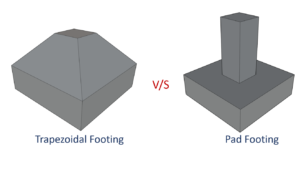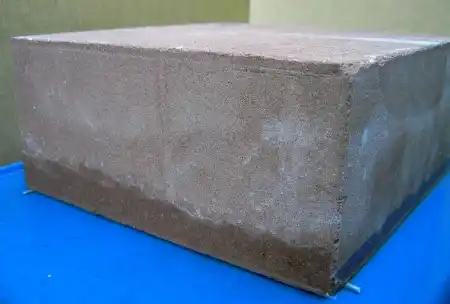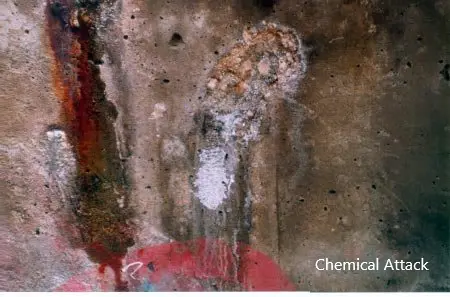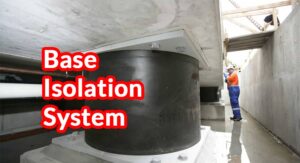
Factors Affecting Durability of Concrete

What is the durability of concrete?
In simple words, the life span of the concrete is called durability.
In technical terms, the resistance capacity of concrete against the chemical attack, weathering action & environmental changes is called durability of concrete—generally, a concrete structure designed at a minimum lifespan of 100 years.
Durability is one of the most important properties of concrete. It depends on the compressive strength & tensile strength of the concrete.
Factors Affecting Durability of Concrete.
- Permeability
- Moisture
- Temperature
- Abrasion
- Carbonation
- Cement Content
- Aggregate Quality
- Water Quality
- Concrete Compaction
- Curing Period
- Wetting and Drying Cycles
- Sulfate Attack
- Organic Acids
- Freezing and Thawing
- Alkali-Aggregate Reaction
Chemical Resistance
1. Permeability
Concrete permeability significantly influences its durability by affecting its susceptibility to water penetration and subsequent damage. Maintaining a low water-cement ratio and incorporating pozzolanic materials are effective strategies for reducing permeability and enhancing durability. Proper attention to concrete mix design and construction practices is essential to minimize permeability-related issues.

2. Moisture
Moisture levels in the environment can impact concrete durability, leading to phenomena such as efflorescence and moisture-induced deterioration. Effective moisture management is crucial to prevent these issues and maintain the structural integrity of concrete over time. Proper drainage, sealing, and surface treatments help mitigate moisture-related damage and enhance durability.

3. Temperature
Temperature fluctuations can influence concrete hydration rates and induce thermal stresses, which may compromise durability. Understanding the thermal coefficients of concrete constituents and employing appropriate construction practices are essential for mitigating temperature-related durability issues. Proper insulation and temperature control measures are crucial for ensuring the long-term performance of concrete structures.

4. Abrasion
Abrasion from factors such as water flow and mechanical wear can degrade concrete surfaces over time, reducing durability. Increasing compressive strength through proper mix design and surface treatments enhances concrete resistance to abrasion, thereby improving durability. Employing durable materials and protective coatings can further mitigate abrasion-related damage and extend the lifespan of concrete structures.

5. Carbonation
Carbonation, the reaction between carbon dioxide and concrete constituents, can lower pH levels and initiate corrosion of reinforcement, leading to reduced durability. Preventative measures, such as using low-alkali cement and incorporating supplementary cementitious materials, help mitigate carbonation-induced deterioration and enhance concrete longevity.

6. Cement Content
The quantity of cement in the concrete mix is a fundamental factor influencing its durability. Insufficient cement content results in a reduced water-cement ratio, compromising workability and strength. Conversely, excessive cement content can lead to issues such as drying shrinkage and alkali-silica reaction, which can significantly impair durability.

7. Aggregate Quality
The quality of aggregates used in the concrete mix plays a crucial role in determining its durability. Optimal aggregate characteristics, including shape, size, and gradation, contribute to improved concrete strength and longevity. Smooth, properly shaped particles enhance workability, while well-graded aggregates ensure denser concrete mixes, thereby enhancing durability.

8. Water Quality
The quality of water used in concrete mixing profoundly impacts the durability of the resulting structure. Utilizing clean, potable water with a pH range of 6 to 8 is essential to prevent adverse reactions that can compromise concrete integrity. Contaminants such as oils, acids, alkalies, salts, and organic materials must be strictly avoided to mitigate corrosion and deterioration.

9. Concrete Compaction
Proper compaction during concrete placement is imperative to minimize voids and ensure uniform density. Inadequate compaction can result in the entrapment of air voids, weakening the concrete and compromising its durability. Effective compaction techniques are essential to achieve durable concrete structures resistant to degradation.

10. Curing Period
Adequate curing during the initial stages of concrete hardening is critical for optimizing durability. Proper curing procedures mitigate the risk of plastic shrinkage, drying shrinkage, and thermal effects, which can lead to cracking and reduced durability. Employing appropriate curing methods and duration is essential for maximizing concrete strength and longevity.

11. Wetting and Drying Cycles
Exposure to alternating wetting and drying conditions can induce stresses in concrete, potentially leading to cracking and corrosion. Proper design considerations, including adequate reinforcement cover and use of low-permeability concrete, help mitigate the adverse effects of wetting and drying cycles on concrete durability. Employing durable materials and construction techniques enhances the resilience of concrete structures to environmental exposure.

12. Sulfate Attack
Sulfate attack can lead to concrete deterioration through chemical reactions with hydrated cement products. Employing sulfate-resistant cement, reducing concrete permeability, and using proper construction practices help mitigate sulfate-induced damage and enhance concrete durability. Proper site assessment and drainage measures are essential for preventing sulfate attack and preserving the integrity of concrete structures.

13. Organic Acids
Exposure to organic acids can adversely affect concrete durability, leading to corrosion and degradation. Protective coatings, chemical treatments, and proper maintenance practices are essential for mitigating the impact of organic acids on concrete surfaces. Employing durable materials and construction techniques helps enhance the resilience of concrete structures to organic acid exposure, ensuring long-term performance and durability.
14. Freezing and Thawing
Repeated cycles of freezing and thawing can cause cracking and spalling in concrete, particularly in cold climates. Incorporating air-entraining admixtures and reducing the maximum size of coarse aggregate help improve concrete durability in freezing and thawing conditions. Proper construction practices, including adequate curing and protection measures, are essential for mitigating the detrimental effects of freezing and thawing cycles on concrete structures.

15. Alkali-Aggregate Reaction
The alkali-aggregate reaction can cause expansion and cracking in concrete, compromising its durability. Mitigation strategies include using low-alkali cement, non-reactive aggregates, and supplementary cementitious materials to minimize the adverse effects of alkali-aggregate reaction on concrete durability. Proper mix design and construction practices are essential for preventing alkali-aggregate reaction-induced damage and ensuring the long-term performance of concrete structures.

16. Chemical Resistance
Concrete has a higher resistance to the chemicals that exist in the environment. In a natural environment, concrete most of the time survive without any damage.
However, there are harmful chemicals that can react with concrete with prolonged exposure. Chemicals such as chlorides, sulfates, bourbon, alkali-silica reaction, etc. can affect the durability of reinforced concrete and such actions of concrete are known as chemical attacks.
Chloride and sulfates attach to the reinforcement leas to the corrosion and as a result structure lift span reduces significantly. Carbonation is also a process of deterioration of the concrete and for more information, articles on this web could be referred.
Eventually, concrete gets cracked due to this issue and structures cannot be occupied. Attention shall be made at the design stages to minimize the effect on the durability of concrete.





